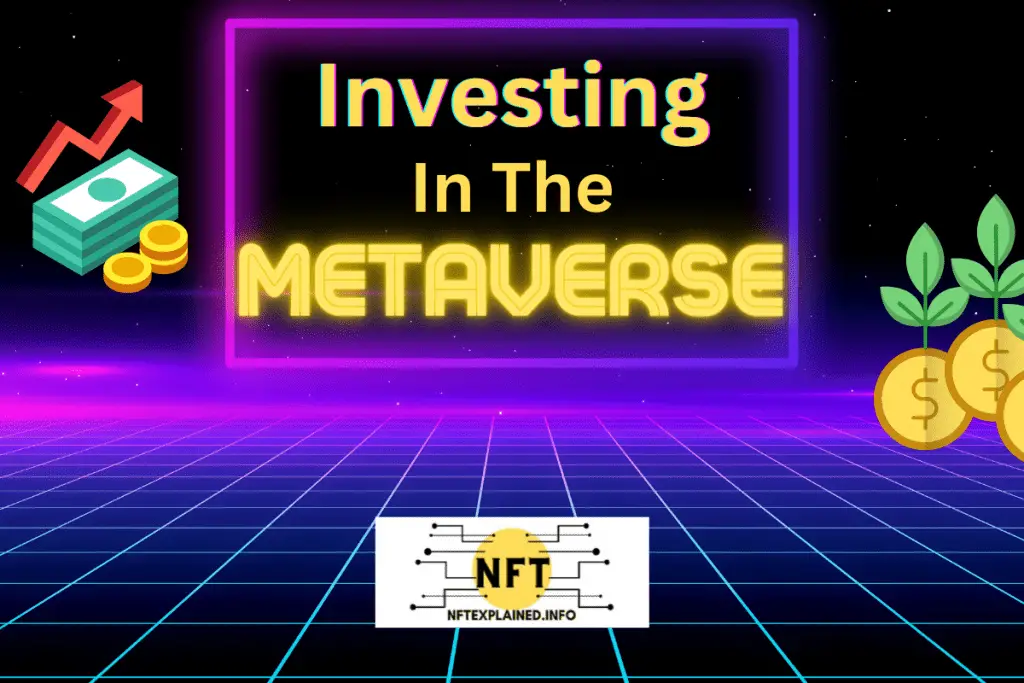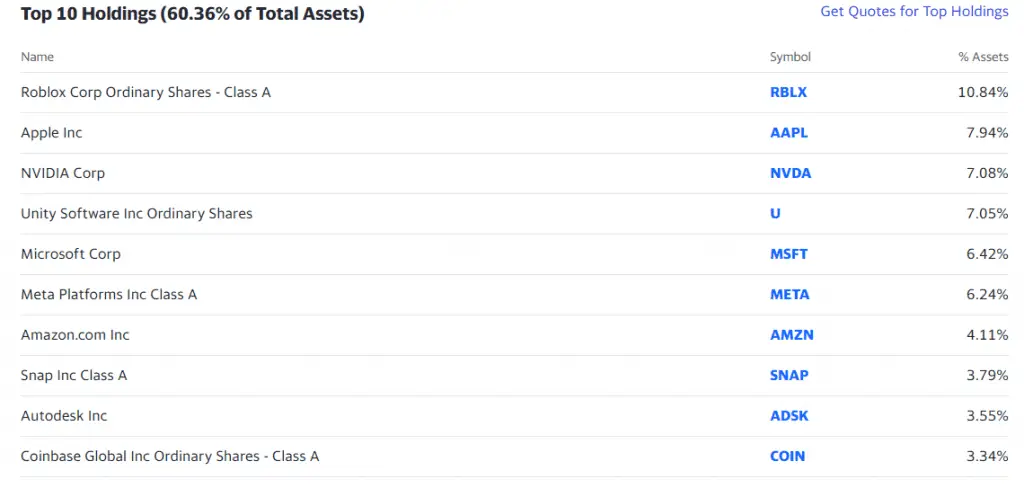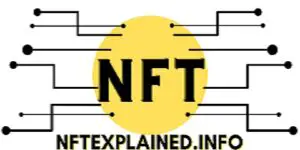
The metaverse is set to boom; this is widely agreed on – including by very intelligent people working for tech giants like Meta – resulting in their decision to invest billions into the concept.
Questions arise as to when this boom will occur and how far into the future the adoption of this concept will take. While unknown, it’s still incredibly valuable to be aware of the different ways – including those that are relatively safe – enabling one to invest into the concept.
Before we really dive into this topic, our team would like to remind the gentle reader that we are in no way providing financial advice and that the creation of our content is solely for education purposes. Always complete your own due diligence before investing in anything.
So, what are the most optimal ways to get exposure to the metaverse?
The core ways to gain exposure and invest into the concept of the metaverse is through investing in its infrastructure, which is through: chipmakers, bandwidth providers, cloud storage, and authoring tools. Additionally, investing in metaverse coins and metaverse stocks also provide good alternative ways to invest.
By investing in the infrastructure, our team means that there are ways to invest without pinking a single or oven several metaverse ‘winners’. We can look at the gold rush for an analogy; the firms that made the largest fortunes were not miners but companies that sold shovels and pick-axes.
Let’s further examine each of these infrastructure related topics – starting with chipmakers.
Chipmakers play an important aspect of key technological advancements and are found in a range of different products including: iPhones, computers, cars (especially electric cars), VR, and AR devices.
A potential investment for chipmakers include NVIDIA; NVIDIA is also a company that might emerge as a critical player in the authoring space with their release of NVIDIA Omniverse.
NVIDIA Omniverse is a powerful tool that may play a role in the creator aspect of the metaverse as users are able to work together, in real time, to create 3D content. More on NVIDIA Omniverse and nine more key metaverse related tools/projects can be found here.
Investing in chipmakers is a good way to get indirect exposure to the development of the metaverse but more specifically metaverse related devices. This investment is relatively safe as it’s not a direct investment into a specific metaverse but rather a way to invest in infrastructure providers that will help the overall development of the metaverse.
Our team says this because it’s widely agreed that the metaverse will be a fully immersive experience and microchips are one piece of technology that will likely be broadly used as they can be considered the brains of many electronic devices.
Another infrastructure related investment likely to parallel the growth of the metaverse is bandwidth providers. Bandwidth is the amount of data that can be transmitted over a specified length of time.
A metaverse proof-of-concept our team has documented is the Travis Scott concert that was hosted in Fortnite; while there were technically 12 million people watching the event live, Fortnite did not have the bandwidth for all users to watch it together.
Instead, Fortnite had servers dedicated to a capped and specific number of people (e.g. 100); this means all users were unable to watch simultaneously in true metaverse fashion.
The bandwidth needed for the metaverse is much higher than existing games and current internet-hosted activities like websites as lots of people need to be able to interact with others in real time.
This brings us to the next metaverse related infrastructure development that can be invested in – the cloud.
As previously mentioned, the metaverse will need an enormous amount of cloud storage in order to save the development of digital items being built by users.
There are existing companies that have sprung up for the sole purpose of solving this key metaverse related issue.
While currently unknown how a fully immersive metaverse will be hosted, some have argued that it won’t be on leading publicly listed cloud providers like Amazon Web Services.
Investing in cloud storage companies is likely investing in a key sector of the metaverse as being able to save the changes that are being made within a virtual realm is essential to the metaverse’s success.
A core aspect of the metaverse is that it will be creator focused in the sense that creators will likely run the economy via technology like NFTs. Additionally, the development of virtual worlds will likely be done by creators.
In order to create immersive 3D content, a broad range of authoring tools are likely to be needed. Examples of today’s common authoring tools include NVIDIA Omniverse – as NVIDIA Omniverse can be integrated into a variety of different industry standard 3D software tools like Epic’s Unreal Engine (which we will touch on more later in the article).
Other development tools that foster the creation of in-game items, that could potentially be exported into a metaverse, are a number of Adobe products; Adobe ($ADBE) is a relatively large and diversified software company with a market cap hovering around the US$ 150-160 billion range.
Adobe Illustrator is an existing Adobe product that is a market leader in the realm of vector graphics development; the product allows for the creation of basic 3D shapes and the extrusion of 2D graphics into 3D ones.
Another powerhouse software developer is Unity Technologies ($U) whose game engine currently runs on 1.5 billion devices worldwide. Over the past few years, Unity has leaned into metaverse authoring toolkits, illustrated by summer 2020’s release of the Mixed and Augmented Reality Studio (MARS). This tool provides developers with functionality for rules-based generation of augmented reality applications.
Epic Games – which is currently a privately held company – is another one that could potentially provide critical software tools exercised in the software development for the metaverse.
Epic Games – the creators of Fortnite and Rocket League – received US$2 billion in funding (from the Lego family and Sony) in order to further their development of the metaverse. The company is the developer of Unreal Engine which has been used in many top grossing films including “War of the Planet of the Apes” and the most recent “The Batman” film. This highly flexible tool is also being exercised to make an open world. “The Batman” film demonstrates how the same tooling can be used to create compelling content for the large screen and immersive game play.
It’s likely that the metaverse will be developed using one or more 3D graphics game engines and ideally the same tooling would be used for the creation of in-game items.
Another potential investment opportunity is investing in ERC-20 tokens for existing blockchain-based metaverses like Decentraland. This brings us to the next section of our article. Stick around as our team will also cover metaverse ETFs.
Are Metaverse Tokens A Good Way To Invest In The Metaverse?
Again, before our team provides our opinion on this subject, we want to reiterate that we are not financial advisors and in no way are providing financial advice.
Now that we’ve gotten that out of the way…
It’s very challenging to say if investing in metaverse tokens is an effective way to invest in the metaverse as these tokens are directly correlated to the success of a specific metaverse. Since the metaverse is still in its infancy it’s challenging to say which metaverse will rise to the top.
Tokens like $MANA from Decentraland have unfortunately seen quite disappointing year to date returns. That being said, our team would recommend doing your own due diligence and checking out these virtual worlds for yourself before making an investment decision.
The Sandbox and Upland are two other viable tokens you may also want to checkout.
While decentralized metaverses have played an integral role in the history of the metaverse, it’s impossible to say if a fully decentralized metaverse – for example, Decentraland – will be the pinnacle of the metaverse.
Many have agreed that the metaverse will be based on blockchain technology like NFTs, which allow users to prove ownership of their digital items; with that in consideration, it’s likely too early to say that a token which is tightly correlated to the success of a single metaverse is a great investment option.
Our team will provide a real world analogy. Going back to our theme of investing in the infrastructure of the railroads (for the metaverse) rather than investing directly into a single train is likely a better option.
With that said, investing in a train rather than the railroad (or infrastructure) is likely to provide a higher return on investment – were the train to be successful. This of course comes with much higher risk. Is that risk worth taking on? That’s for you to do your own due diligence and decide.
Let’s now examine metaverse indexes.
What Is A Metaverse Index & What Are Some Viable Options?
An index fund for the metaverse is a group of stocks that track the performance of the metaverse; these stocks are composed of different fields related to the metaverse. A metaverse related ETF you may want to check out is $METV; top holdings in this ETF include Roblox, Apple, and Invidia.
Attached below is a screenshot of the index’s current top ten holdings as detailed by Yahoo Finance:

Coinbase – $COIN – is one of the METV’s top holdings and currently holds around 3.34% of the funds total assets; Coinbase is one of the largest centralized cryptocurrency exchanges and allows for the trading of NFTs.
Our team chooses to use Binance rather than Coinbase because of the lower fees as well as the larger range of coins that can be purchased. U.S. readers of NFTExplained can get a crypto trading discount on Binance!
That being said, Coinbase is publicly traded while Binance is not. It’s widely agreed that the metaverse will contain many blockchain-related technologies which results in a broad array of stocks held in the ETF.
Let’s move on to examine NFTs.
Should You Invest In NFTs For The Metaverse?
NFTs are widely agreed to be the foundation for the creator economy in the metaverse as NFTs allow users to prove ownership of digital items. NFTs are a technology that enables a range of different capabilities through smart contracts. Investing in an NFT project – even with metaverse related goals in mind – can be risky.
Smart contracts enable the buying and selling of these digital assets and are an integral aspect of NFTs.
NFTs are the railroad or the foundation for how a core aspect of the metaverse will take shape – the creator economy expected to power the buying & selling of digital assets.
Going back to the analogy our team previously used, investing in a single NFT project – even one with high metaverse aspirations – can be risky as this is betting on a single train rather than the railroad.
Again, a specific project investment comes with higher risk but also higher reward.
Given that the pinnacle metaverse is not clearly established, it’s challenging to say which metaverses and NFT projects built specifically for that metaverse will be successful. It’s likely that many metaverses will fail before there are a few core established metaverse or a single widely used metaverse.
Let us know how you are choosing to invest in the metaverse by connecting with our team on Instagram, Twitter & TikTok! Please subscribe to our YouTube!
Additionally, please consider supporting our team’s content creation through doing business with our partners: Buy a Ledger hardware wallet. Trade stocks & crypto on Webull – get 2 free stocks. U.S. users can get a crypto trading discount on Binance!

